Browse the history and current uses of our buildings
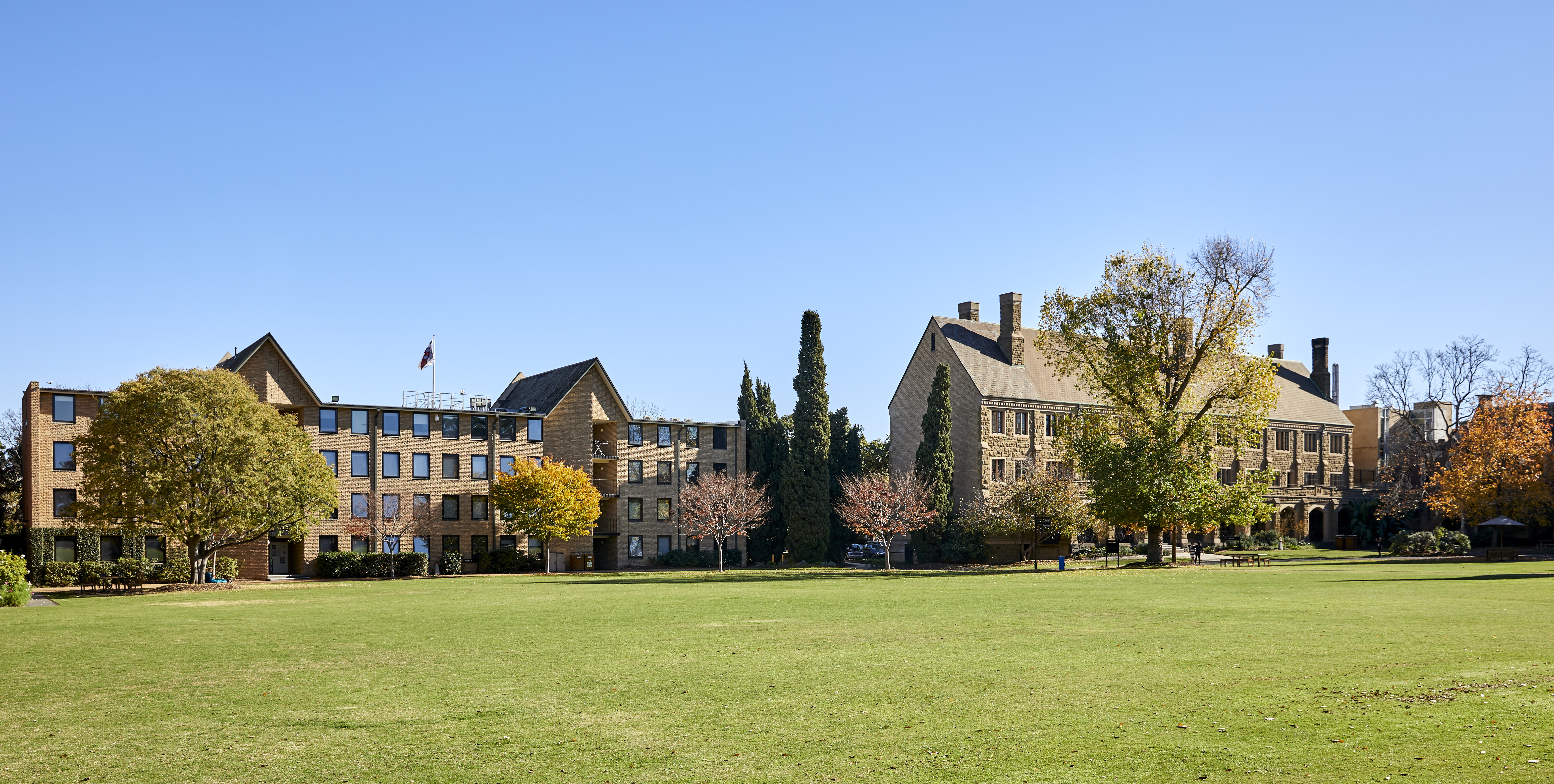
Residential Buildings
Behan
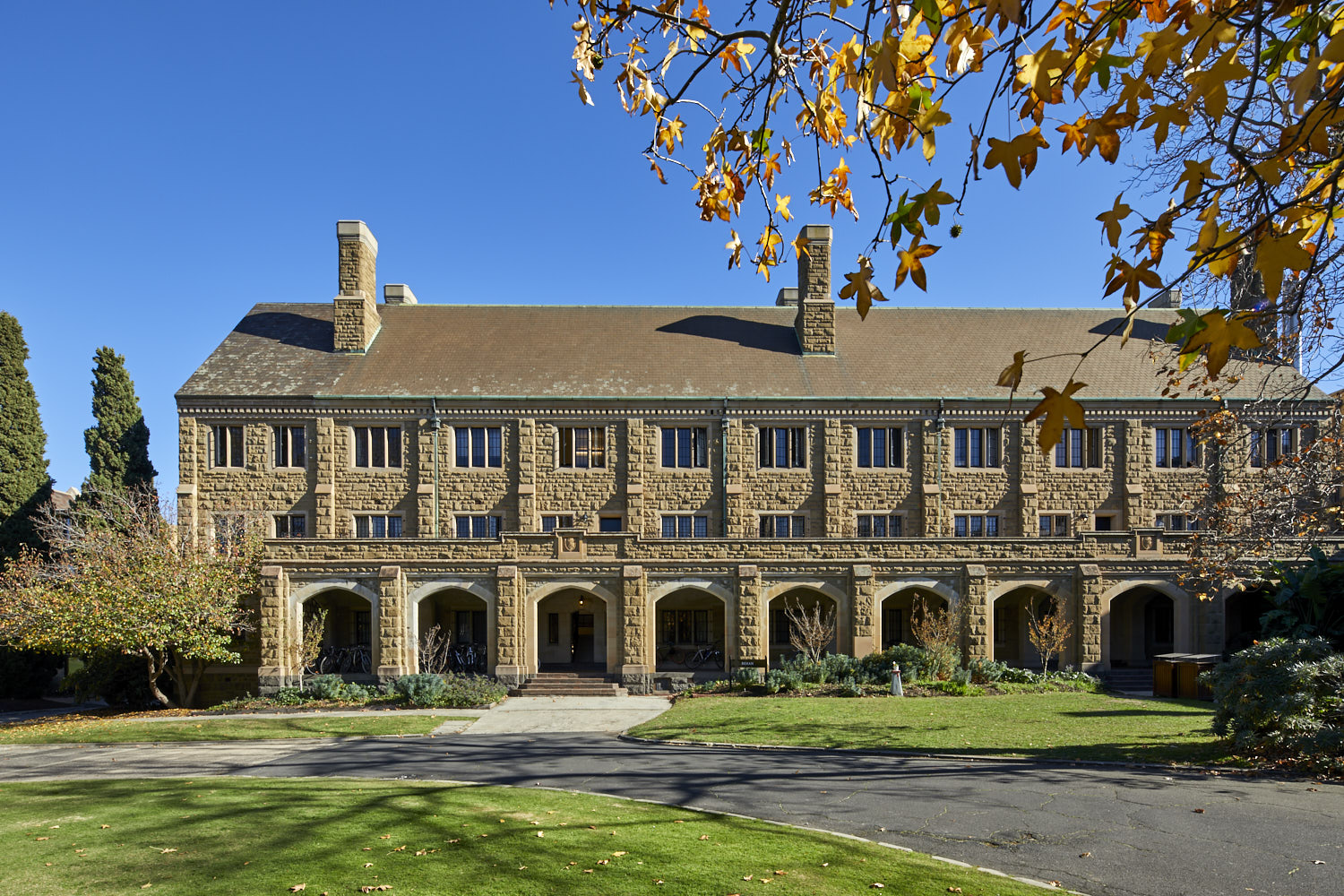
Behan opened in 1935 and is named after Trinity College’s second Warden, Sir John Clifford Valentine Behan. It is constructed in solid Barrabool sandstone and was one of the last stone buildings to be built in Melbourne following the closure of the Geelong quarries.
The building’s interior features beautiful Queensland silky oak, and the cloisters, grilles and staircases showcase wrought iron detailing.
Upon its completion in 1935, Behan was considered to have set a new standard for collegiate accommodation in Australia due to its thoughtful design and quality workmanship. It now has student rooms across three floors and remains a favourite of students today.
Bishops'
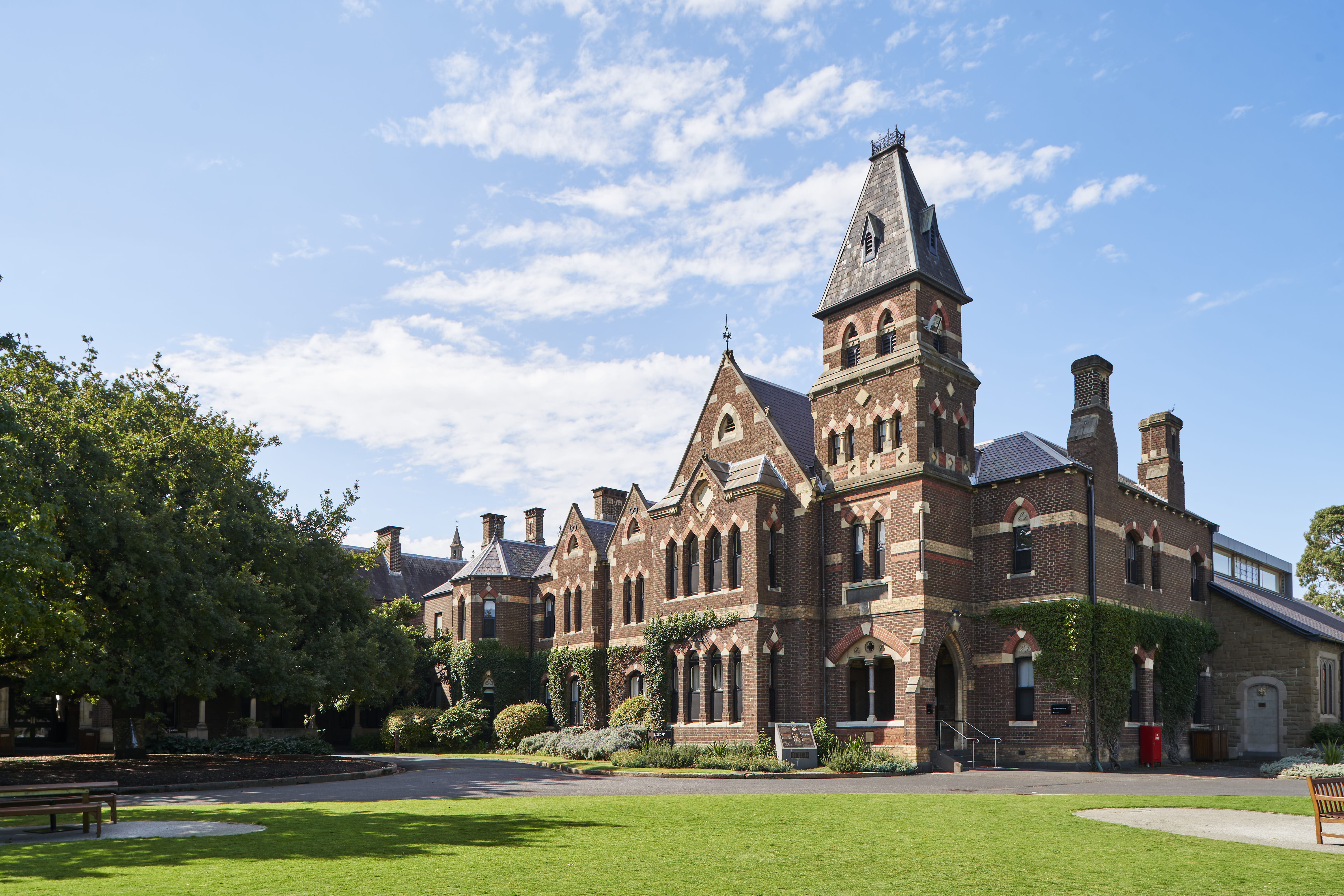
Bishops' is probably the first building that will catch your eye as you enter our main campus – the polychrome brick design of this striking neo-Gothic building, complete with a stately bell tower, creates our postcard shot.
The building was completed in 1878 and is named after the first two Bishops of Melbourne: Bishop Perry, who founded Trinity College in 1872, and Bishop Moorhouse, who founded the Trinity College Theological School in 1877.
Bishops' is a mixed-use building, which contains our reception, residential student rooms, staff offices, tutors’ flats and our Senior Common Room.
Clarke

In a similar style to that set by Bishops’ a few years earlier, the Clarke building was completed in 1887 and is characterised by dark Hawthorn brick elegantly interspersed with Waurn Ponds sandstone features. A shady cloister runs along the length of the building, forming the north side of the campus quadrangle.
This building is named after brothers Joseph and Sir William Clarke, who were both generous benefactors of the College and supported the building’s construction. The Clarke building is now heritage listed by the state of Victoria. Today Clarke houses student rooms, the Junior Common Room, tutor apartments, the billiards room and a study room.
Cowan
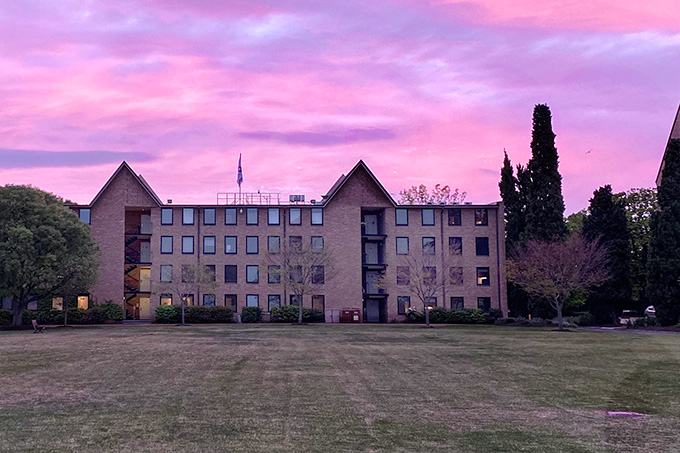
Cowan is a solid brick building that overlooks the Bulpadock (our large central lawn) and Royal Parade, and was built to meet the growing demands for residential collegiate education in the post-war period. It's named after Trinity’s third Warden, Mr Ronald William Trafford Cowan, and was completed in 1965.
Dorothy Jane Ryall Building
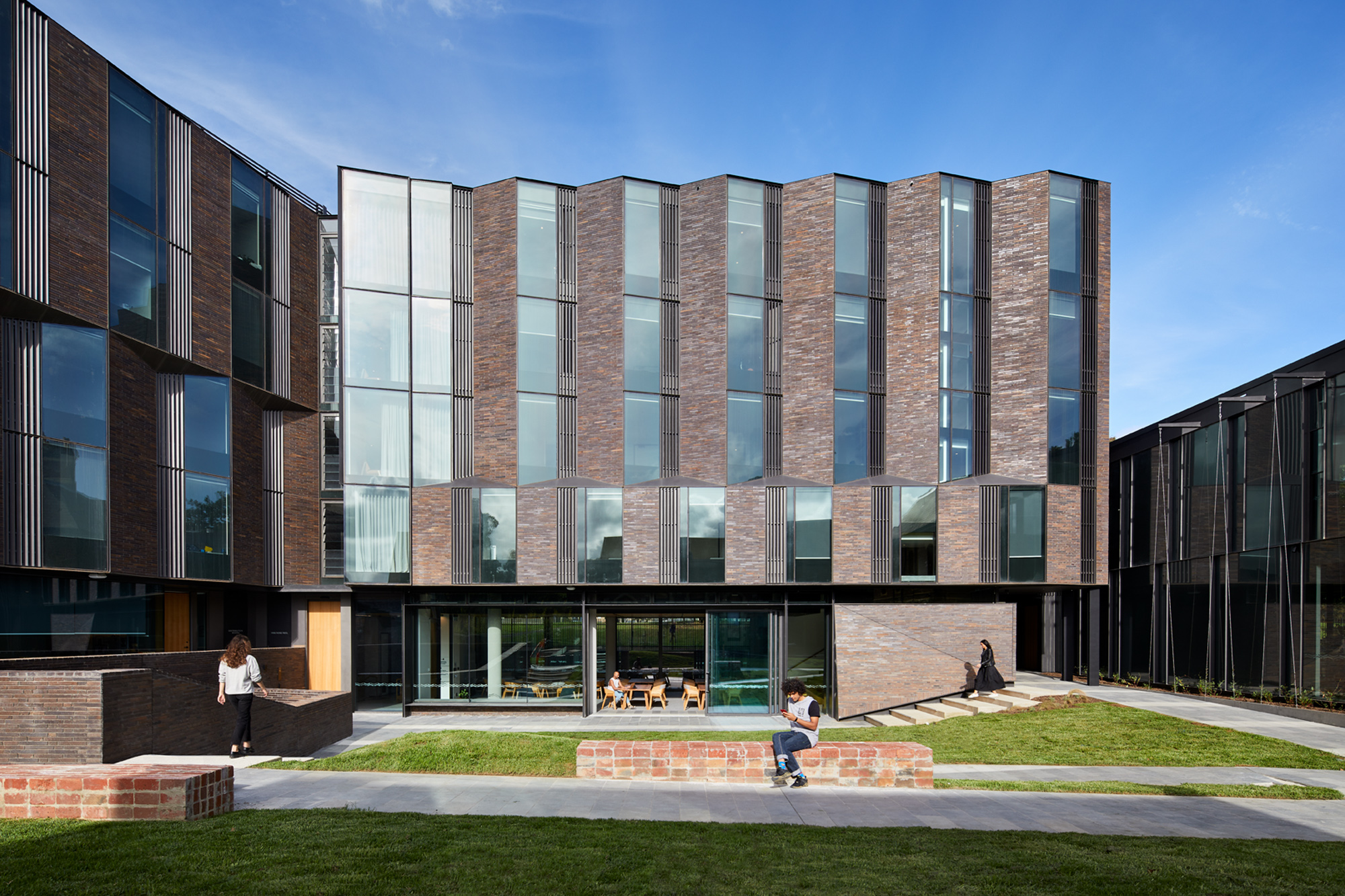
'Dorothy', our newest residential building, was named in honour of Dorothy Ryall – a matron at Trinity College for more than a decade until her passing in 1942. Dorothy was a nurse and treated casualties from the Gallipoli campaign in Egypt during World War I, followed by other nursing roles in Australia and abroad. The building includes 100 student rooms, four tutor flats and a large apartment for a senior Residential College staff member. It also features state-of-the-art facilities, including a student study/common area, a gym, music and art rooms, office space and a two-storey Junior Common Room with a balcony. The building is surrounded by lawns and shaded courtyards, where students can relax or study. In line with Trinity College’s sustainability commitment, the new building is heated and cooled using geothermal energy, has a solar array and harvests and reuses rainwater for the gardens and to flush toilets.
Gourlay (Woodheap)
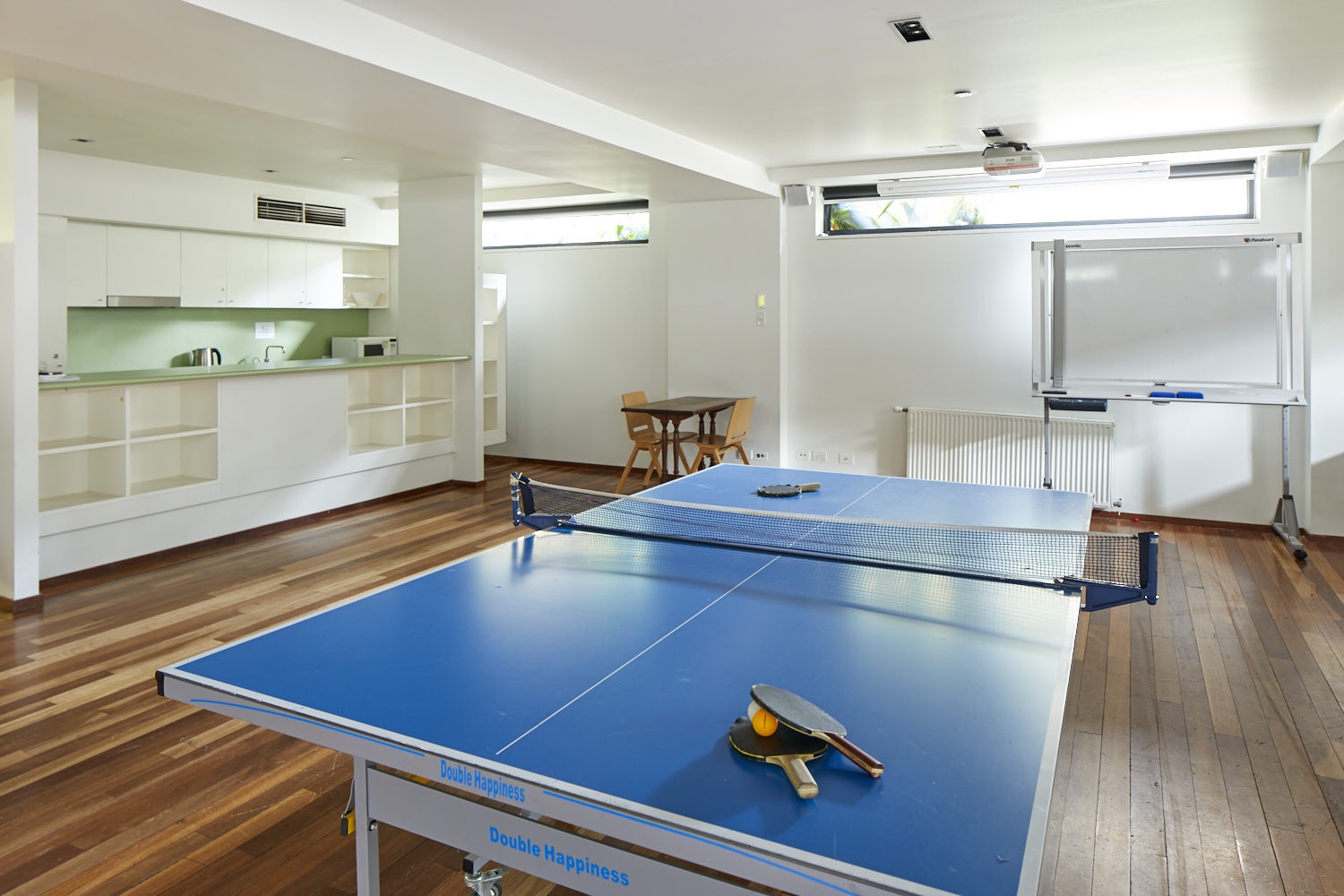
Gourlay is a residential building that was completed in 2007. It incorporates ensuite student rooms, a tutor's flat, a student common area, communal kitchen, and two apartments for visiting scholars. The building was constructed on the site of an old stockpile for firewood and hence was nicknamed the 'Woodheap'.
Memorial Building (Jeopardy)
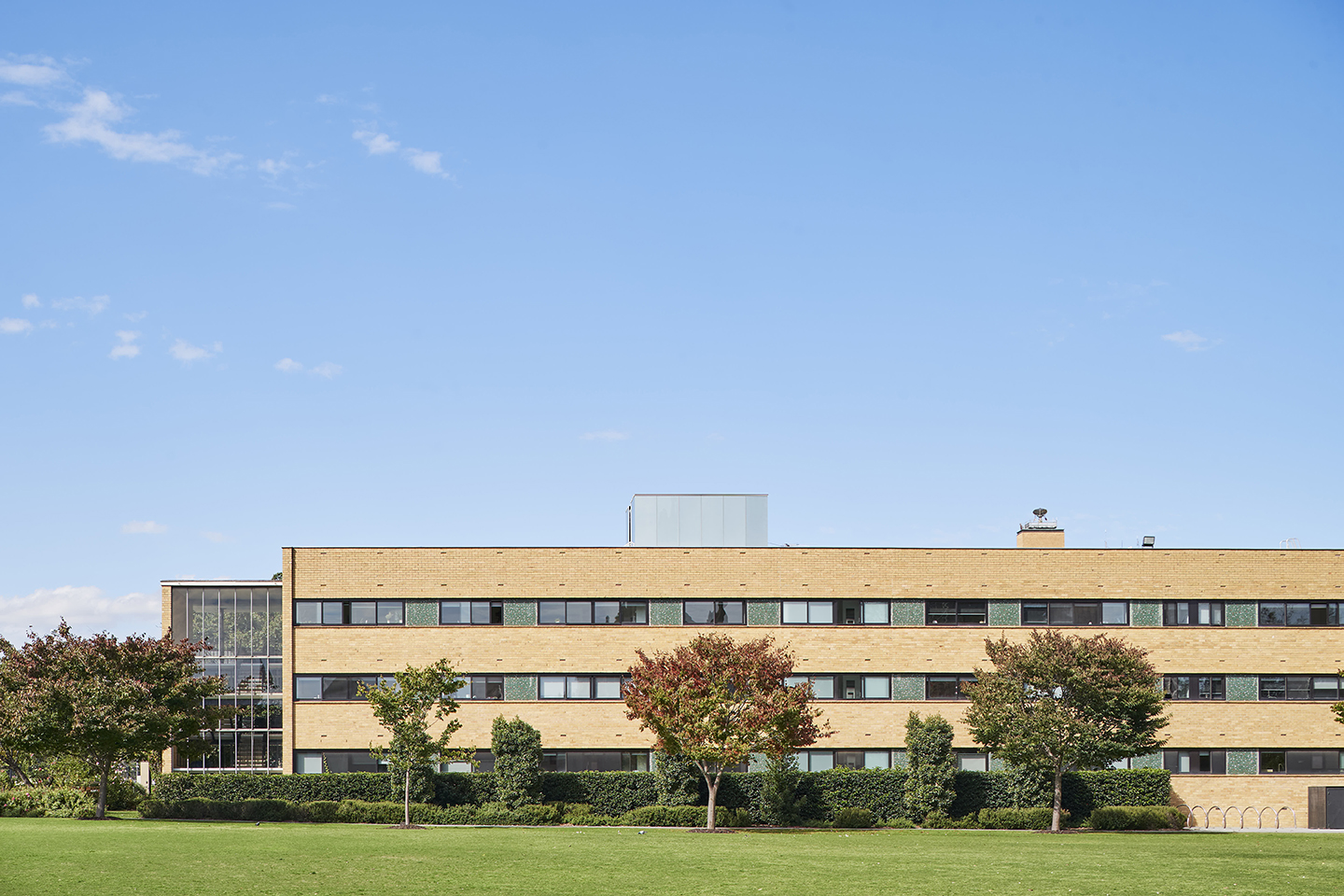
Opened in 1958, the Memorial Building was constructed to commemorate the 600 Trinitarians who served during World War II. The building was soon nicknamed 'Jeopardy', however, when the Warden at the time, Ron Cowan, warned that students ‘who did not work hard enough would find their place in jeopardy’. Students billeted in the building upon its completion ensured the name stuck, and now both names feature on the building’s plaque. Jeopardy serves as a residential wing and includes a number of apartments for residential tutors.
Kitchens
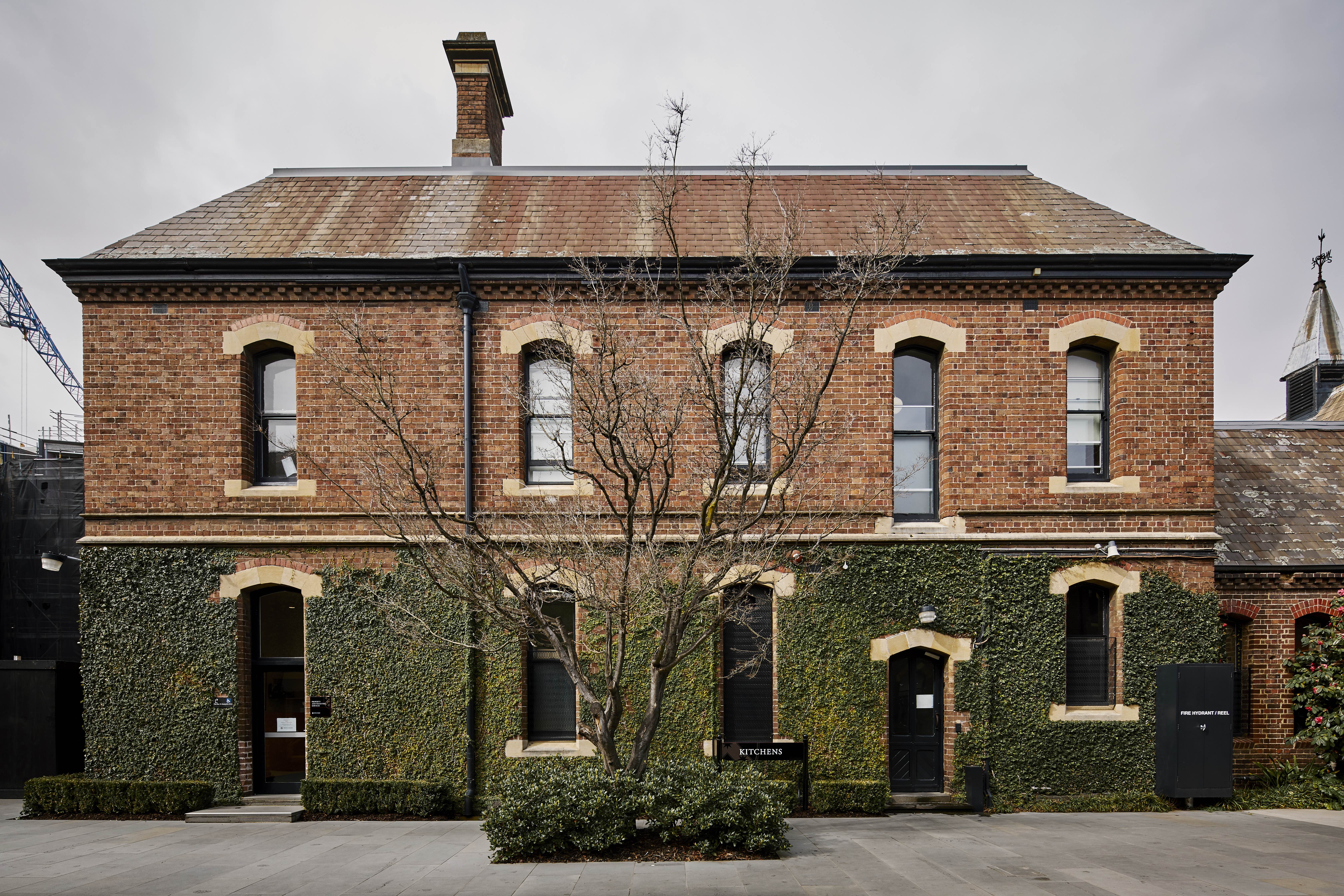
Built in 1891, Kitchens was so named because it was originally built to accommodate our kitchen facilities, along with the matron and domestic staff who looked after the students.
Former staff bedrooms have since been converted into residential student rooms on the first floor and our Property & Facilities Services office now sits at ground level alongside the catering areas. The building looks out over the pretty Sharwood courtyard and is conveniently the closest residential block to the café.
Academic Buildings
Gateway
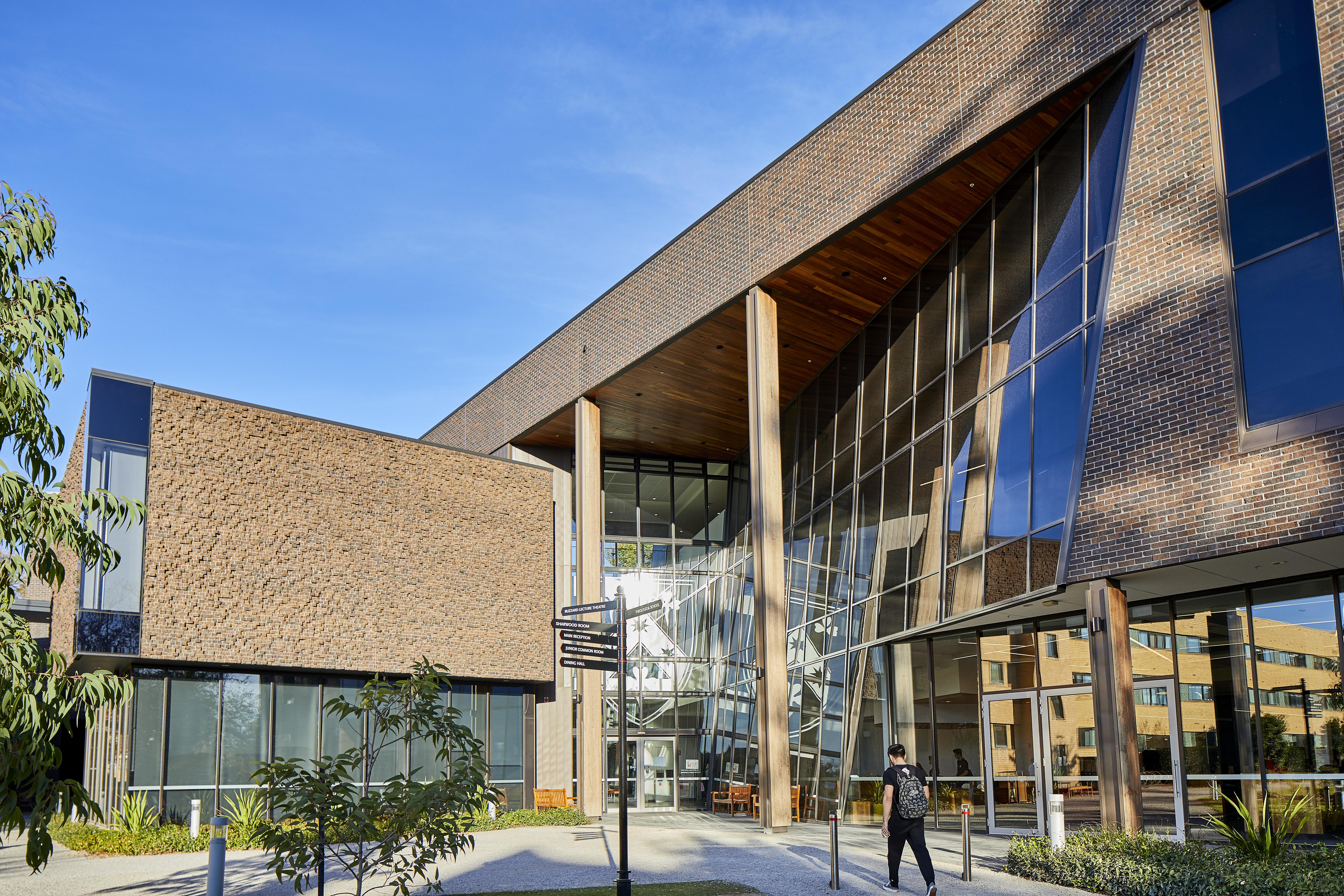
The Gateway building was completed in 2016 and forms a bridge between Trinity College and the adjoining University of Melbourne. It has modern teaching facilities, including a 250-seat auditorium, tutorial rooms, drama rooms, music practice rooms, the Professor Sir Joseph Burke Gallery, computer and physics laboratories, and spacious, light-filled student common areas.
The Gateway Building is used primarily by our Foundation Studies students during teaching hours, then residential students have access to the facilities after hours.
Evan Burge & Leeper Library

Evan Burge is named after Trinity’s fifth Warden, the Reverend Dr Evan Burge. It holds Trinity's Leeper Library, the Buzzard lecture theatre, a number of tutorial and meeting rooms, and our IT department.
The Leeper Library was founded in Trinity's earliest days and contains notable research collections in law, theology and Australian history, as well as medieval manuscripts and rare books kept in a climate-controlled compactus store. It was opened by former governor-general Sir Ninian Stephen in 1996. Students have 24-hour access to the library and there are printers and photocopiers.
Leeper
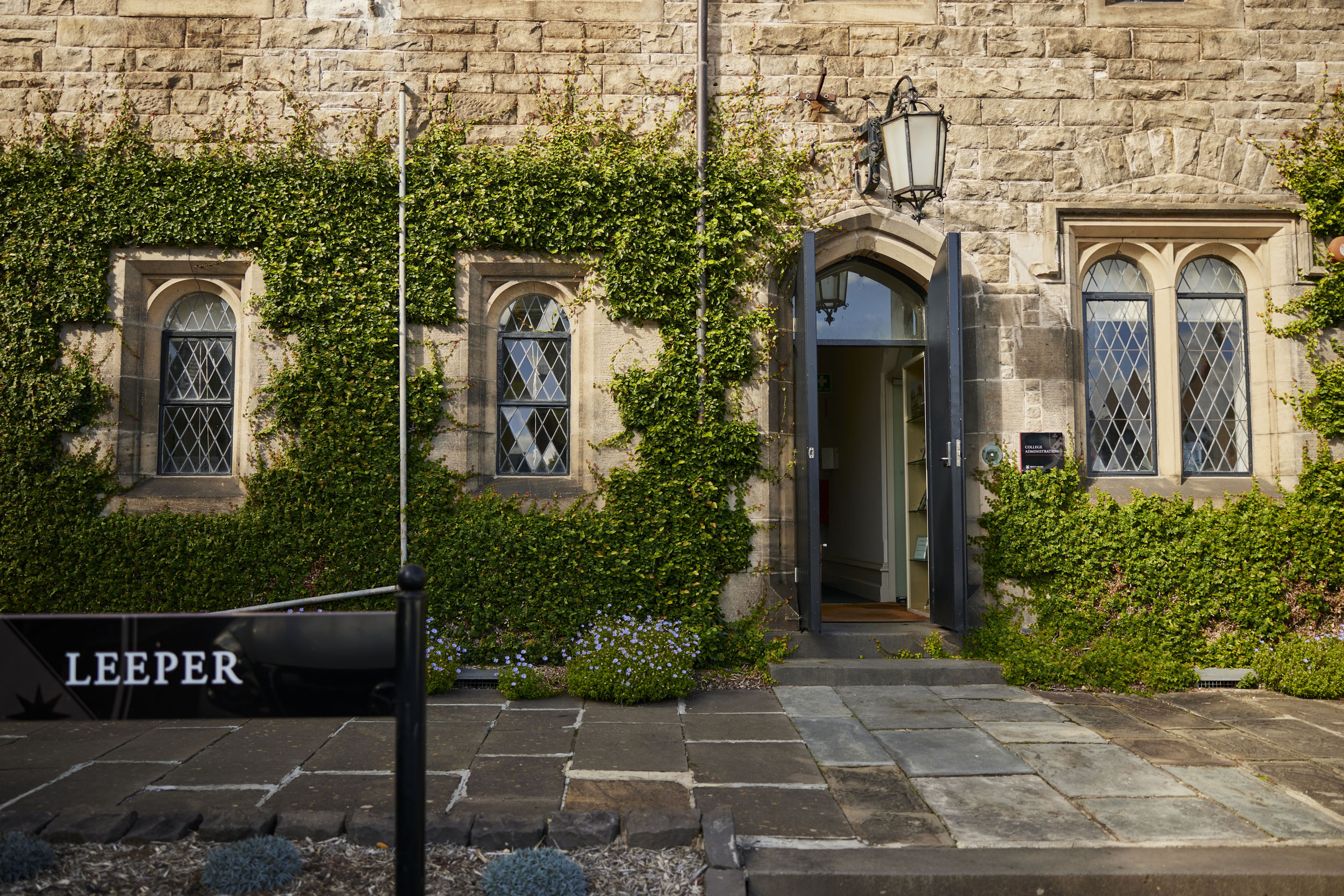
As Trinity’s original building, Leeper is where the Trinity story starts. It was the first residential college building in Victoria when it opened in 1872. Built originally as the Warden’s lodge, it is named in honour of Trinity’s first Warden, Dr Alexander Leeper, who lived there with his family for almost 42 years until 1918.
Construction of the Tasmanian sandstone building commenced in 1870 in a late Gothic revival style, complete with diamond-patterned leadlight windows. Climbing ficus creeps up the exterior walls and thick beds of lavender line the entrance. Suffice to say, Leeper is exceptionally Insta-friendly.
Leeper now houses much of Trinity College’s administration and shared services offices, including the offices of the Warden and Deputy Warden.
The Summer House

The Summerhouse is one of Trinity’s most charming buildings and was built in the mid-1920s as a pavilion next to the Warden’s private tennis court. These days it serves as the office of our Director of Major Projects.
Old Warden's Lodge (OWL)

The Old Warden's Lodge (often referred to as ‘OWL’) was designed in the late 1950s as a private home for the Warden and his family. Today it is the physical and spiritual home of the Trinity College Theological School, a college of the University of Divinity. The building provides office accommodation for the Dean and staff of the Theological School and includes lecture and seminar rooms and a common room. The building wraps around a peaceful central courtyard.
243 Bouverie Street
.jpeg)
Our science labs for Foundation Studies students are located on Bouverie Street, a five-minute walk from our Swanston Street campus. Here we hold classes in biology and chemistry.
Common Rooms & facilities
Dining Hall
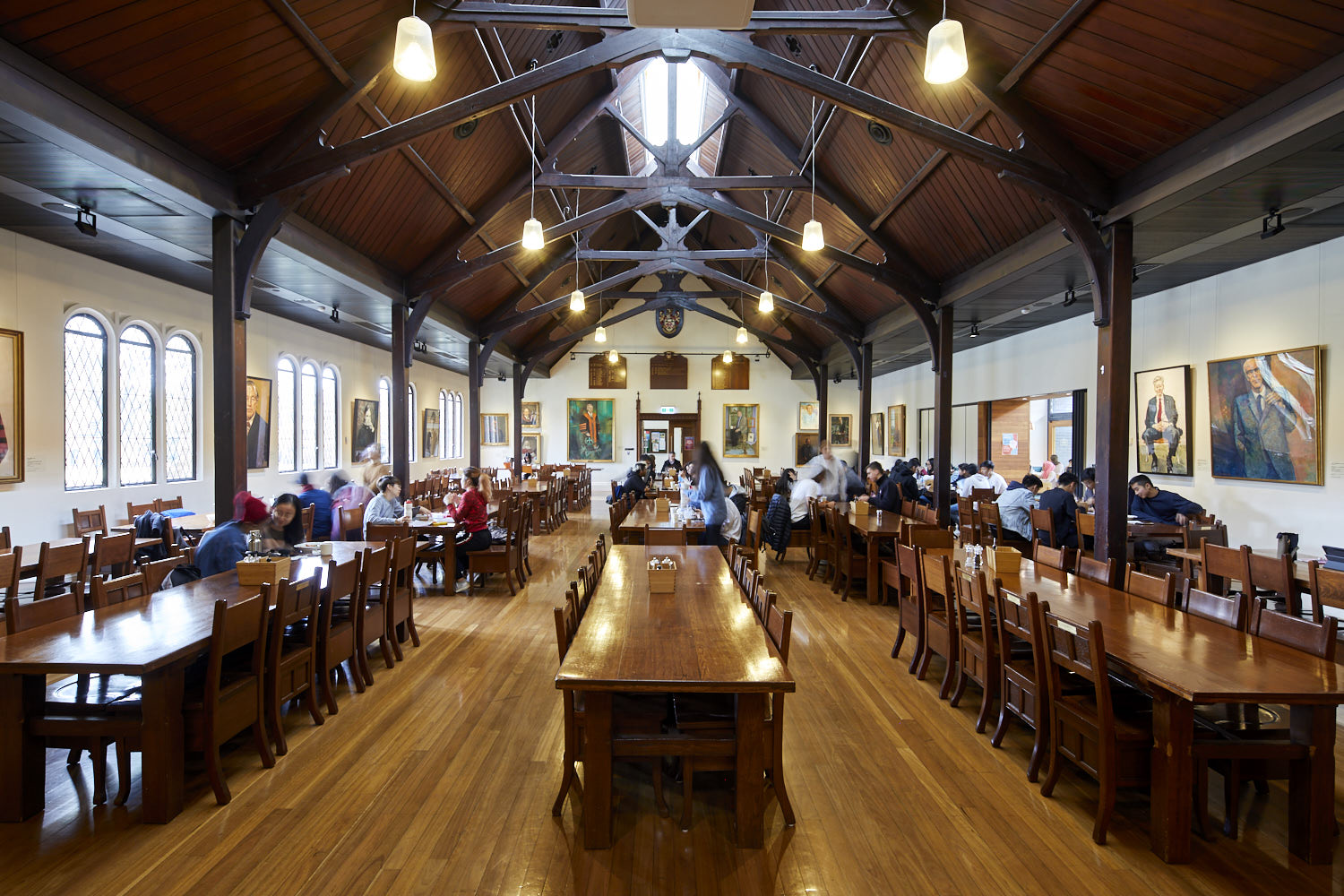
Dating back to 1880, our grand, high-ceilinged Dining Hall is central to Residential College life and draws parallels to a Harry Potter film set, particularly when our students dress up for formal dinner in their long black robes (this happens four nights a week during university terms).
Students and staff also use this space as a communal eating and meeting area throughout the day, meaning the Dining Hall is always abuzz with activity.
The walls of the Dining Hall display one of the finest privately held collections of portraiture outside Australia’s national art collecting institutions, depicting Trinity College’s founders and notable alumni. The portraits have been completed by eminent artists such as Arthur Boyd, Rupert Bunny, Rick Amor, Julia Ciccarone and Yvette Coppersmith.
Work is underway on the new Dining Hall, as part of the Kitchens Precinct redevelopment.
Cripps Room
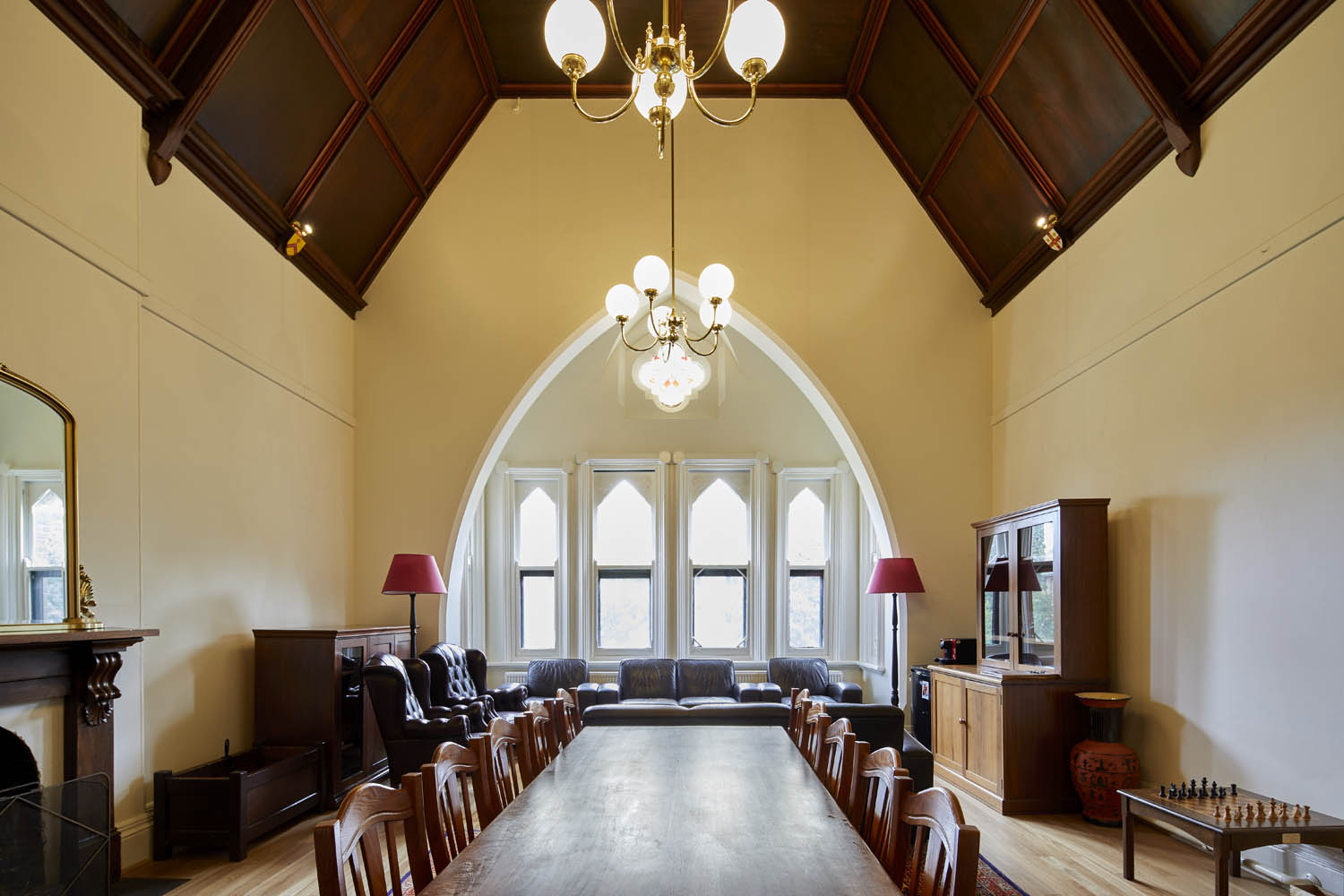
This elegant room was established in Upper Bishops’ in 1982. It was designated a Middle Common Room for senior undergraduates and postgraduate resident students in 2001 and now serves as a common space for special events and meetings.
Gourlay basement
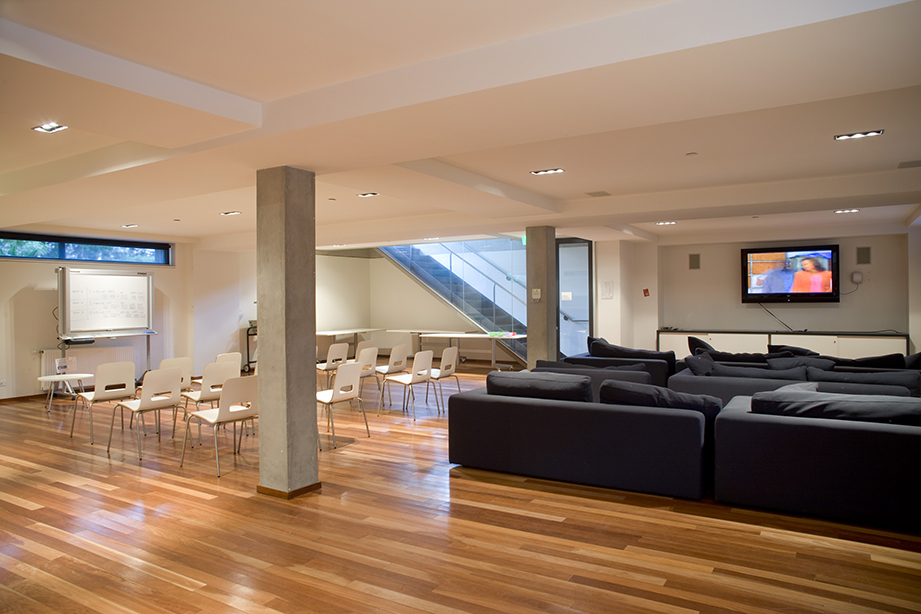
The Gourlay Basement is a student lounge that includes sofas, a television and kitchen amenities. It is also used as a multi-purpose room by our students, who use it for events and meetings.
Junior Common Room (JCR)

Located across two levels in Dorothy, the JCR is a stylish and open space that hosts the majority of our student functions. When it's not being used for functions, it's a comfy and relaxing area for students to gather and hang out. It has a lower deck and upstairs balcony, with views over the university oval.
Senior Common Room (SCR)
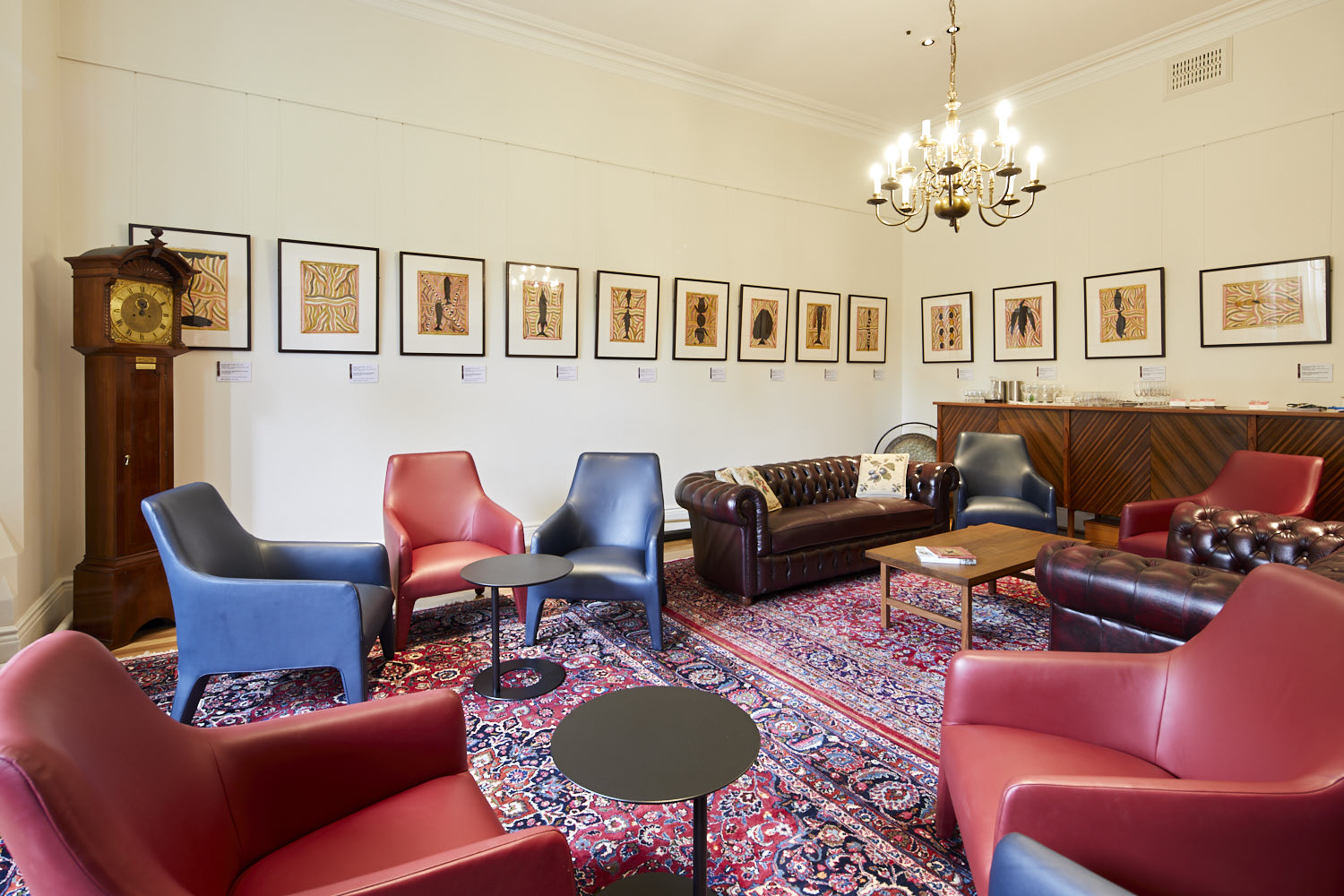
All tutors, lecturers and senior administrative staff members of Trinity College are eligible for Senior Common Room (SCR) membership. The SCR is located in the Bishops’ building and is an intellectual and social meeting place where we host fireside chats and talks by visiting scholars and alumni.
The walls of our SCR are lined with a collection of Indigenous Yolngu artworks by the late Wandjuk Marika. They tell the Yolngu story of Creation and the pieces were kindly presented to Trinity by members of the Marika family.
Stephen Jones Wine Cellar
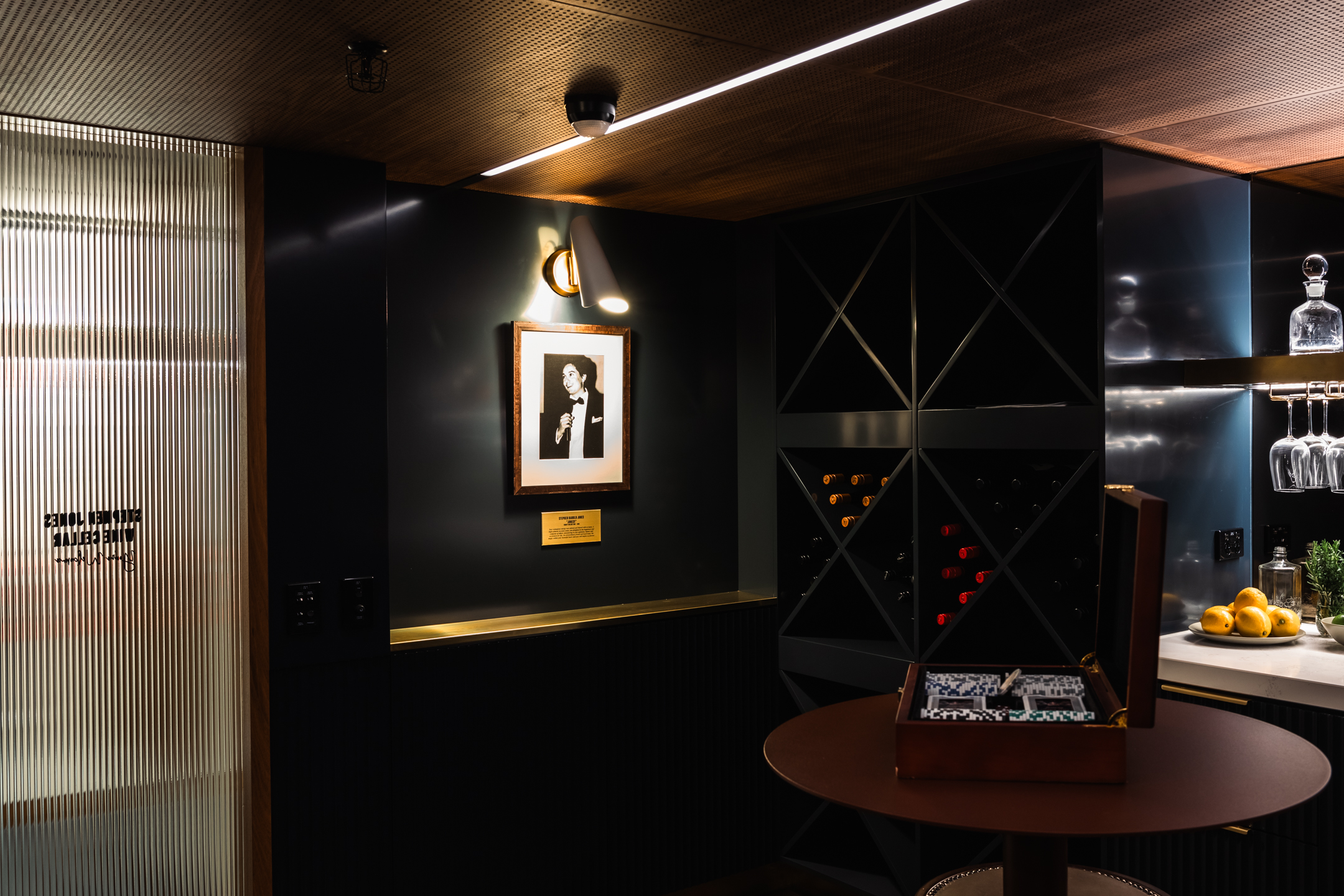
The Stephen Jones Wine Cellar is in memory of the late Stephen Jones (TC 1997). The wine cellar was made possible by the generous support of our donors. It can booked for special events by contacting the College via email.
Sharwood Room
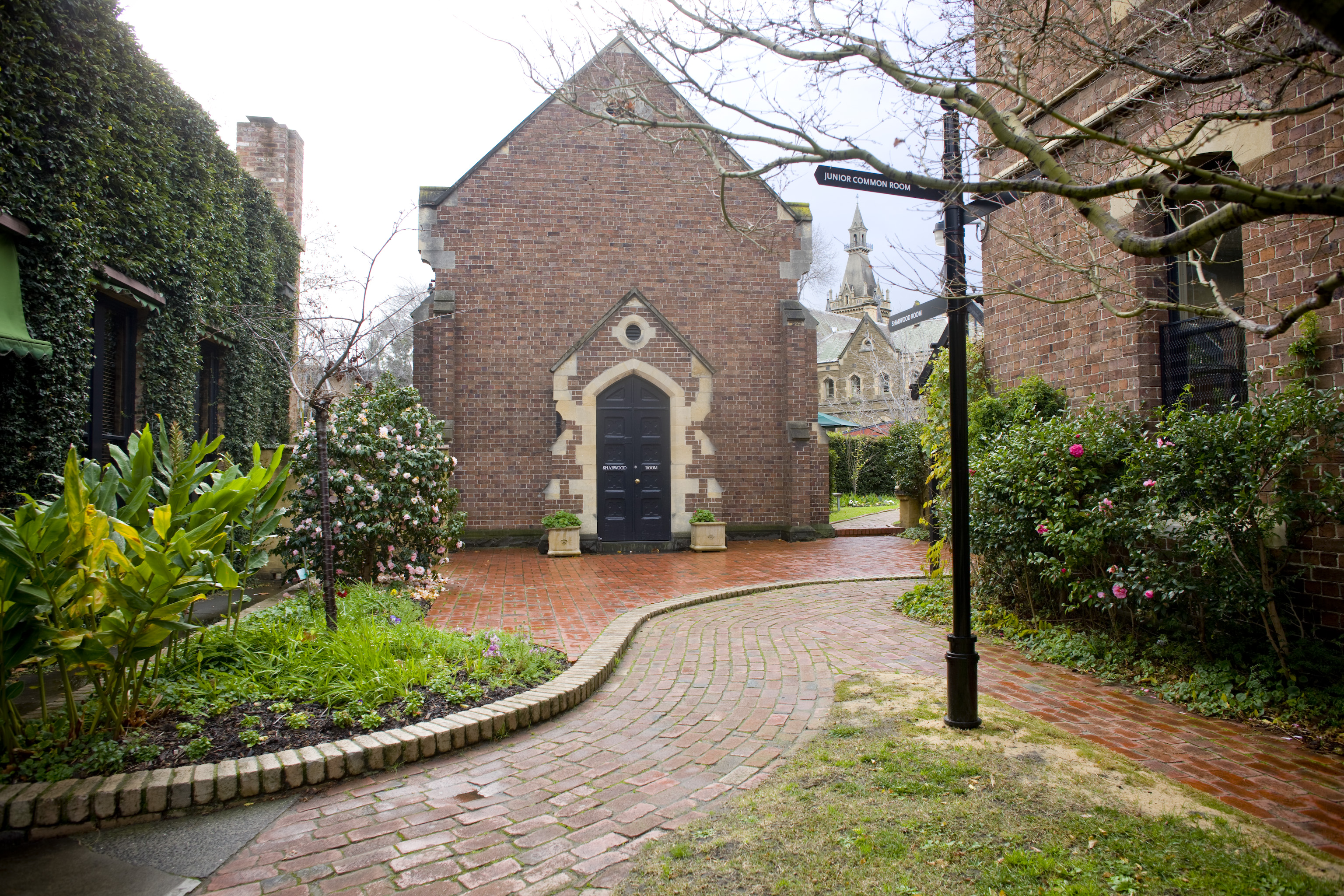
This quaint, free-standing building at the eastern end of the Clarke building was originally constructed as a chemistry and biology laboratory.
The pseudo-ecclesiastical room with high ceilings and large windows was built following a £1000 gift to Trinity College from Sir William Clarke in 1885. The building was later used as a music room, and since its renovation and naming after the fourth Warden in 1993 (Robin Sharwood), it has continued as a music room and is used for meetings and functions.
Study Commons
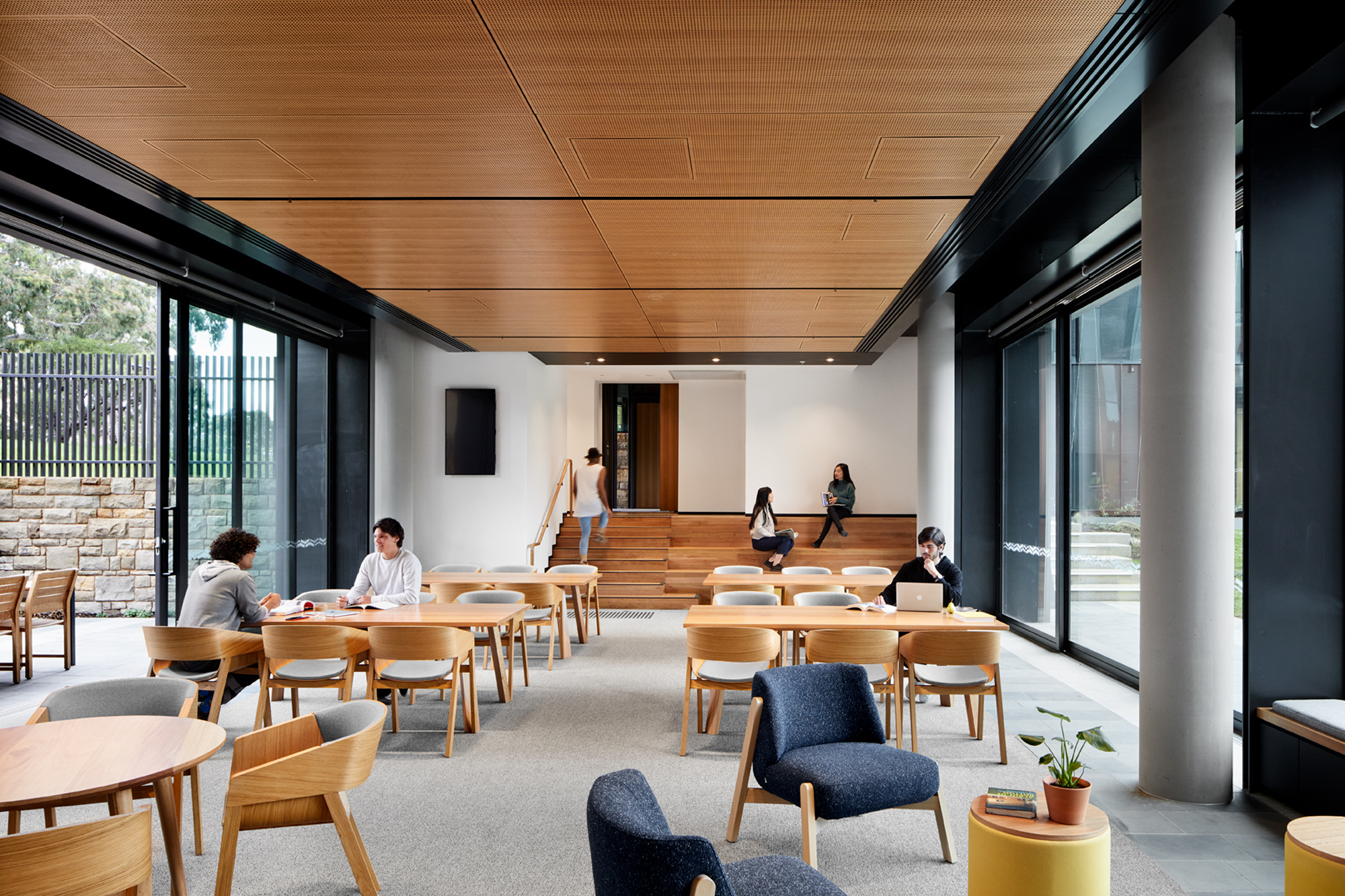
At the base of the Dorothy residential building is the Study Commons. Filled with natural light, this large communal space is the perfect place for students to study independently or collaboratively. The Study Commons also features a projector and screen, and an adjoining sandstone courtyard. This space also hosts events such as our Fireside Chats.
Outdoor spaces
The Bulpadock
The Bulpadock (or ‘the Bul’ for short) is our large central lawn. Its name morphed from the term ‘bull paddock’, as this was once a grazing ground for the dairy cows that supplied Trinity College with milk. A cast bronze bull statue overlooks the lawn and serves as a reminder of the lawn’s original function.
The Bul is a common meeting point for students of both the Residential College and Foundation Studies program, and is a place for study, sports and relaxation. On a sunny day you’ll often see students kicking around a football on the lawn or stretched out on the grass with a book.
College Oak
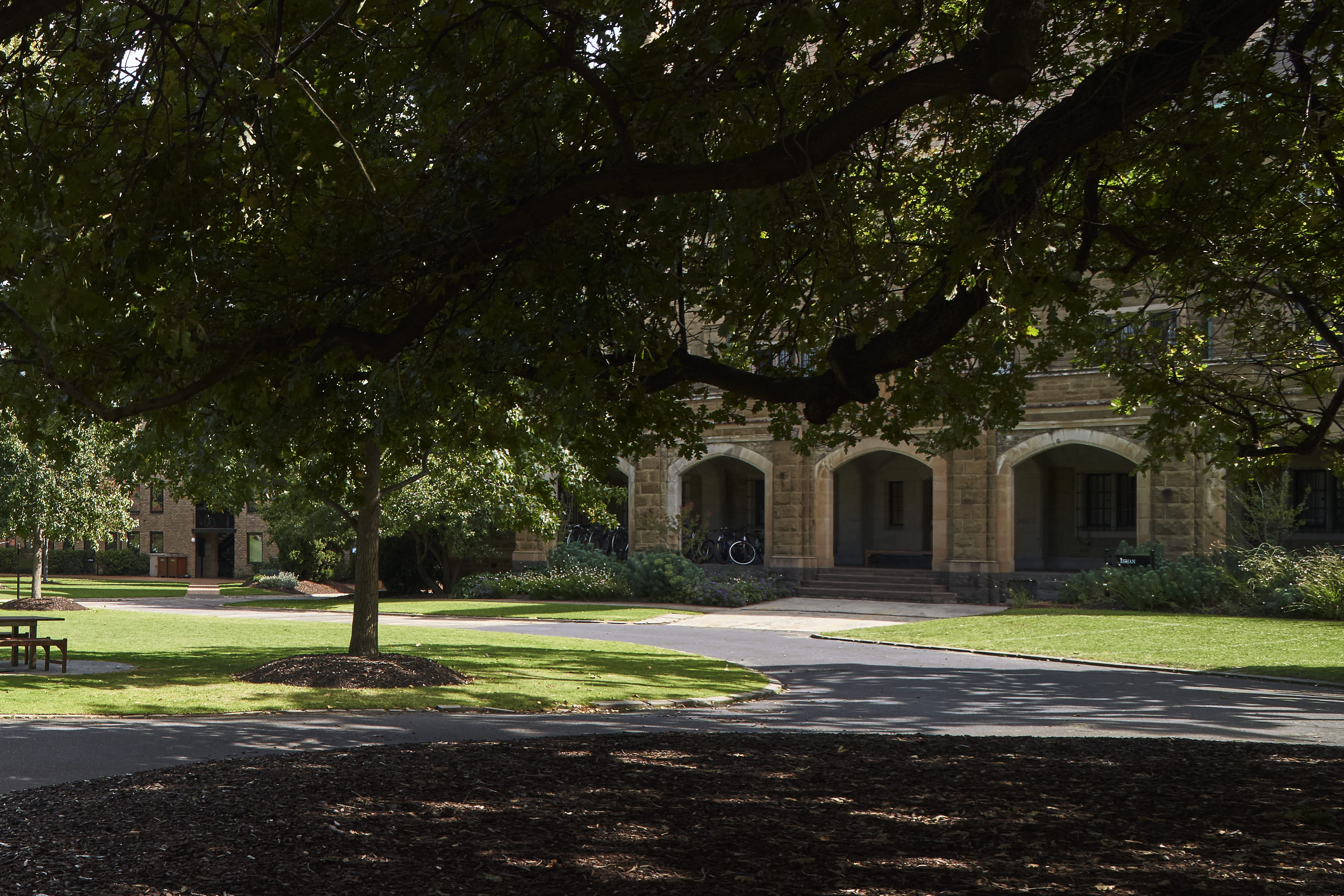
F.R. Kendall, honorary secretary of the Trinity College Council, planted the College Oak in 1880, shortly before he returned to England. His hope was that many generations of Trinitarians would sit in the shade of the tree. Sadly, the original oak didn’t survive, and it would take another six oaks before one finally took root and blossomed into a centrepiece on our grounds.
The current oak’s giant branches now create a peaceful shady spot for students to relax and the space around the tree is the site of an annual alumni gathering aptly named ‘Drinks Under the Oak’. This event doubles as the annual general meeting of our alumni union, the Union of the Fleur-de-Lys.
Special buildings
The Chapel
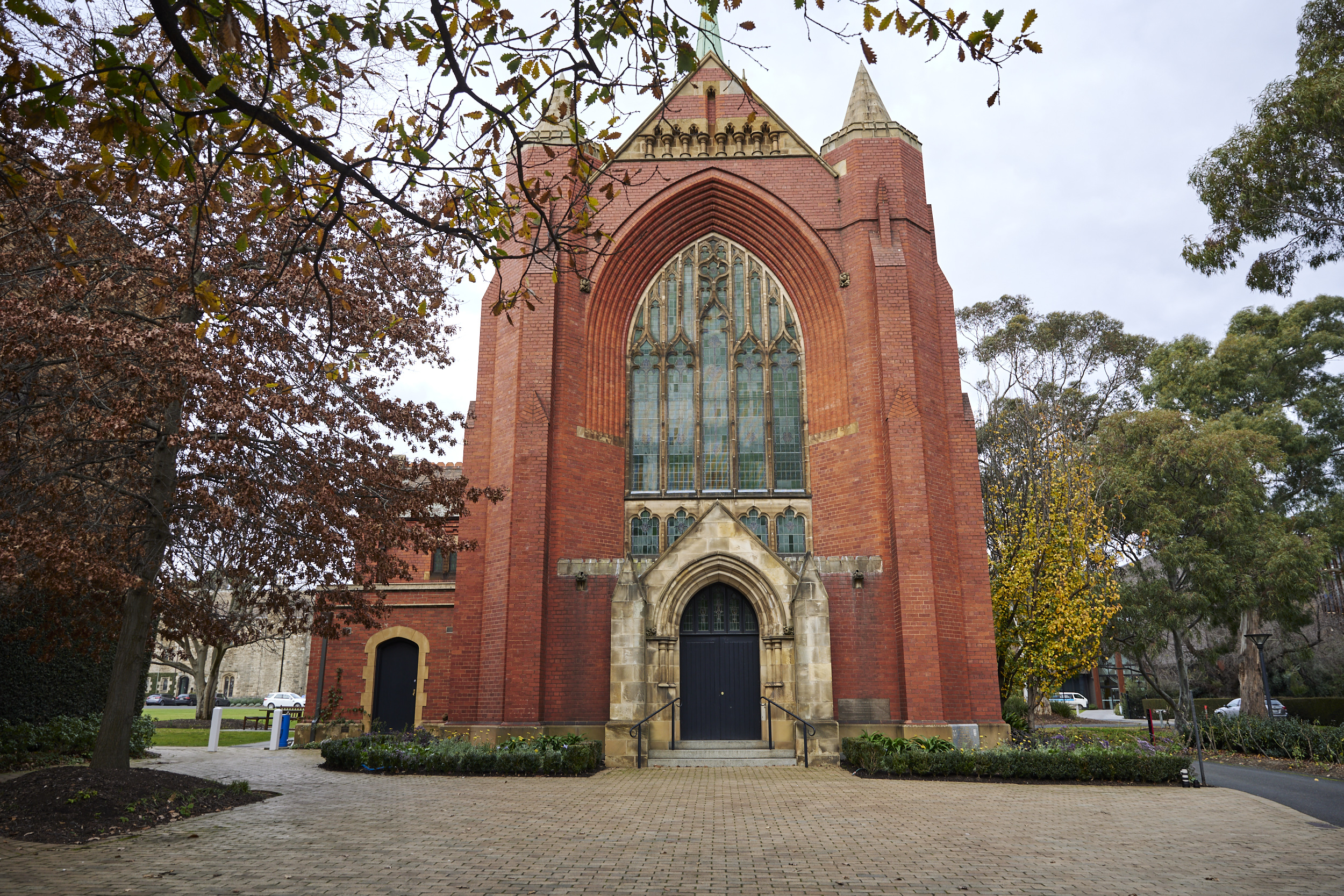
Trinity College’s Anglican foundation and Christian values are encapsulated in our elegant Chapel, which we share with our neighbouring college, Janet Clarke Hall (JCH was the female-only residential wing of Trinity College from 1886–91).
The Chapel is a place for worship, reflection and prayer, and is a sacred space where all are welcome. Many Trinitarians return to the Chapel for special events and a number of our alumni have been married here. The building is also the home of the acclaimed Choir of Trinity College.
The Chapel of Trinity College and Janet Clarke Hall was designed and built between 1911 and 1917. Its construction was made possible by a gift from John Horsfall in memory of his daughter Edith Carington.
